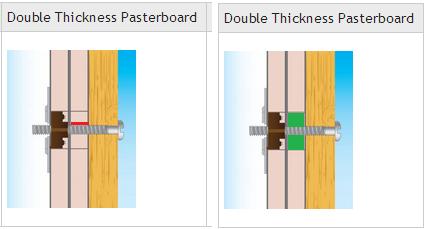http://www.gripitfixings.co.uk/
Anyone used these?
I have a 28" TV to mount on a stud wall. The wall is steel verticals with doubled up 12mm plasterboard, dry lined, not skimmed. Bracket falls directly between two up rights.
Thinking of using these. Anyone know if they will work with two layers of board?
Anyone used these?
I have a 28" TV to mount on a stud wall. The wall is steel verticals with doubled up 12mm plasterboard, dry lined, not skimmed. Bracket falls directly between two up rights.
Thinking of using these. Anyone know if they will work with two layers of board?



